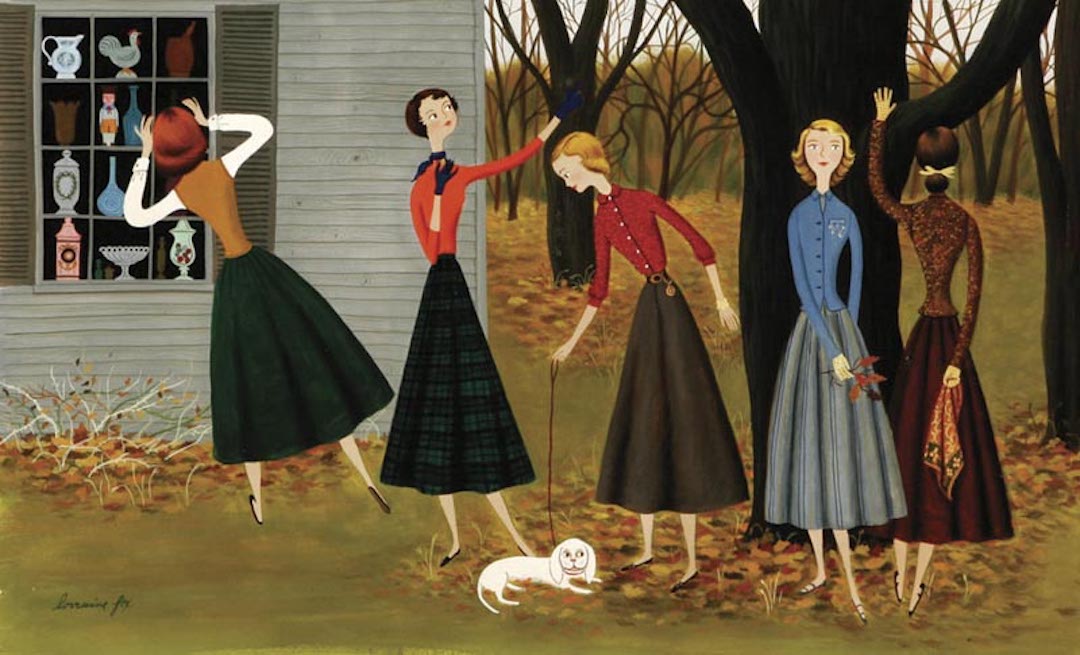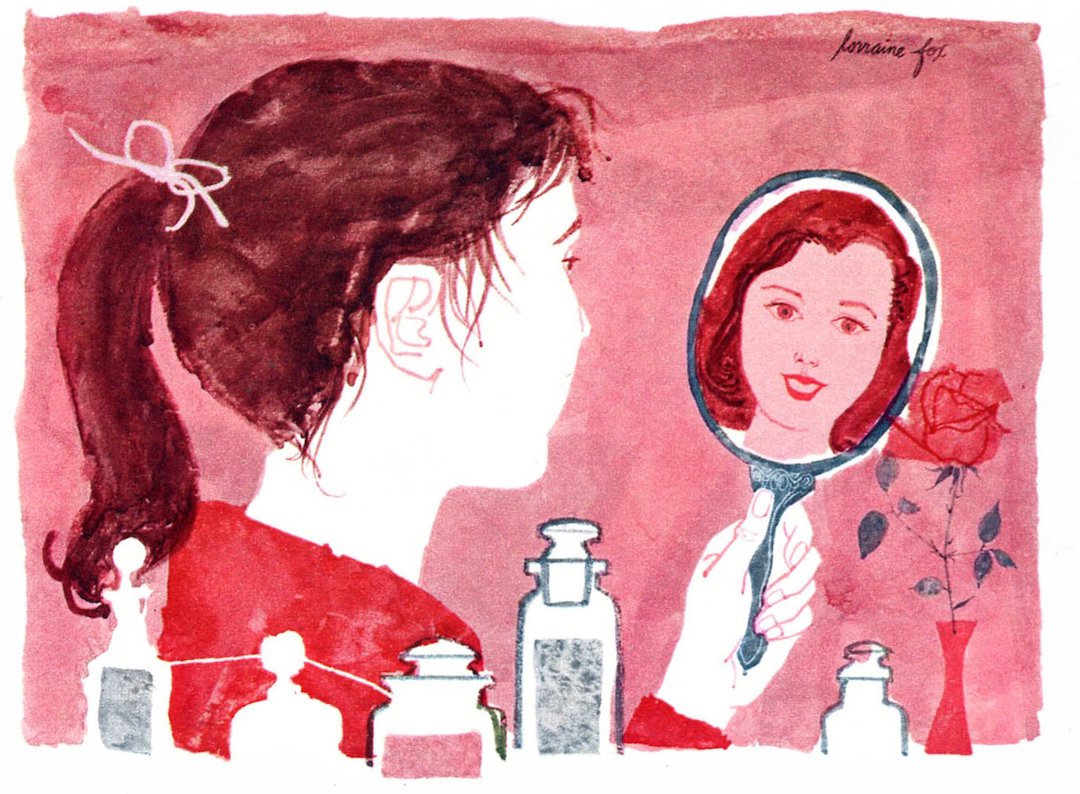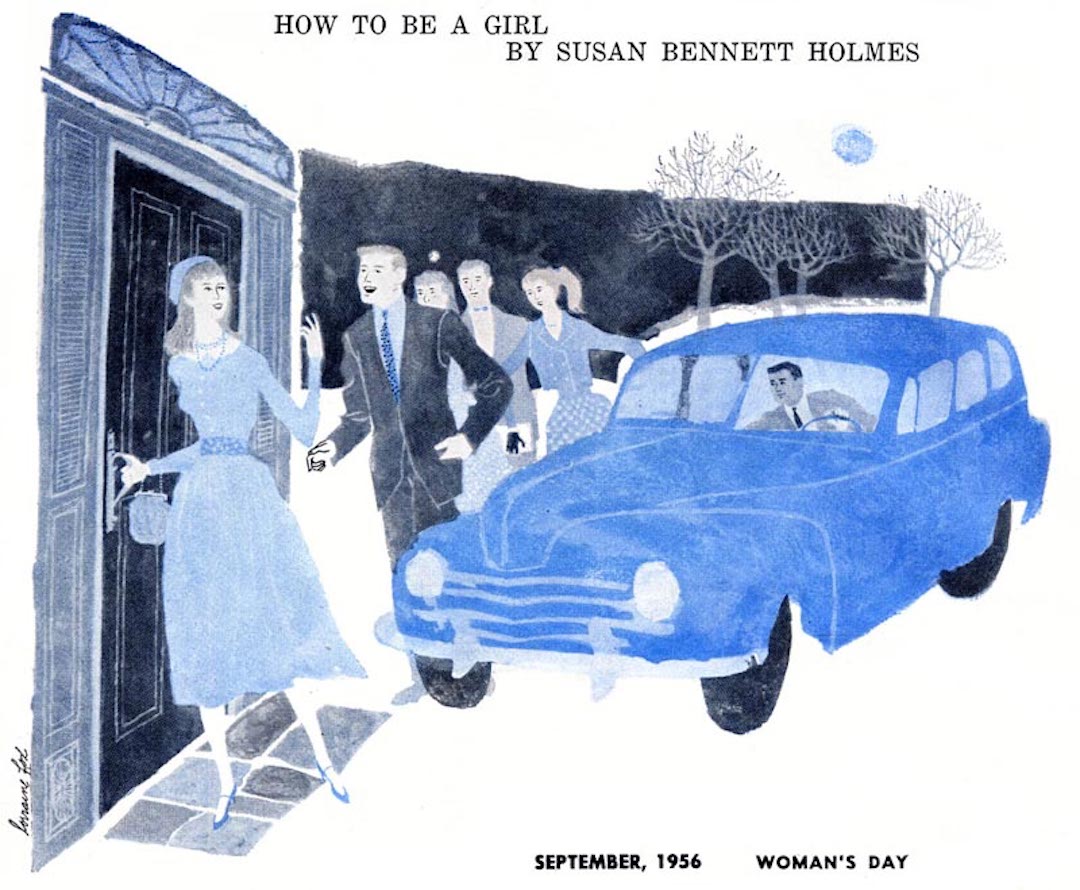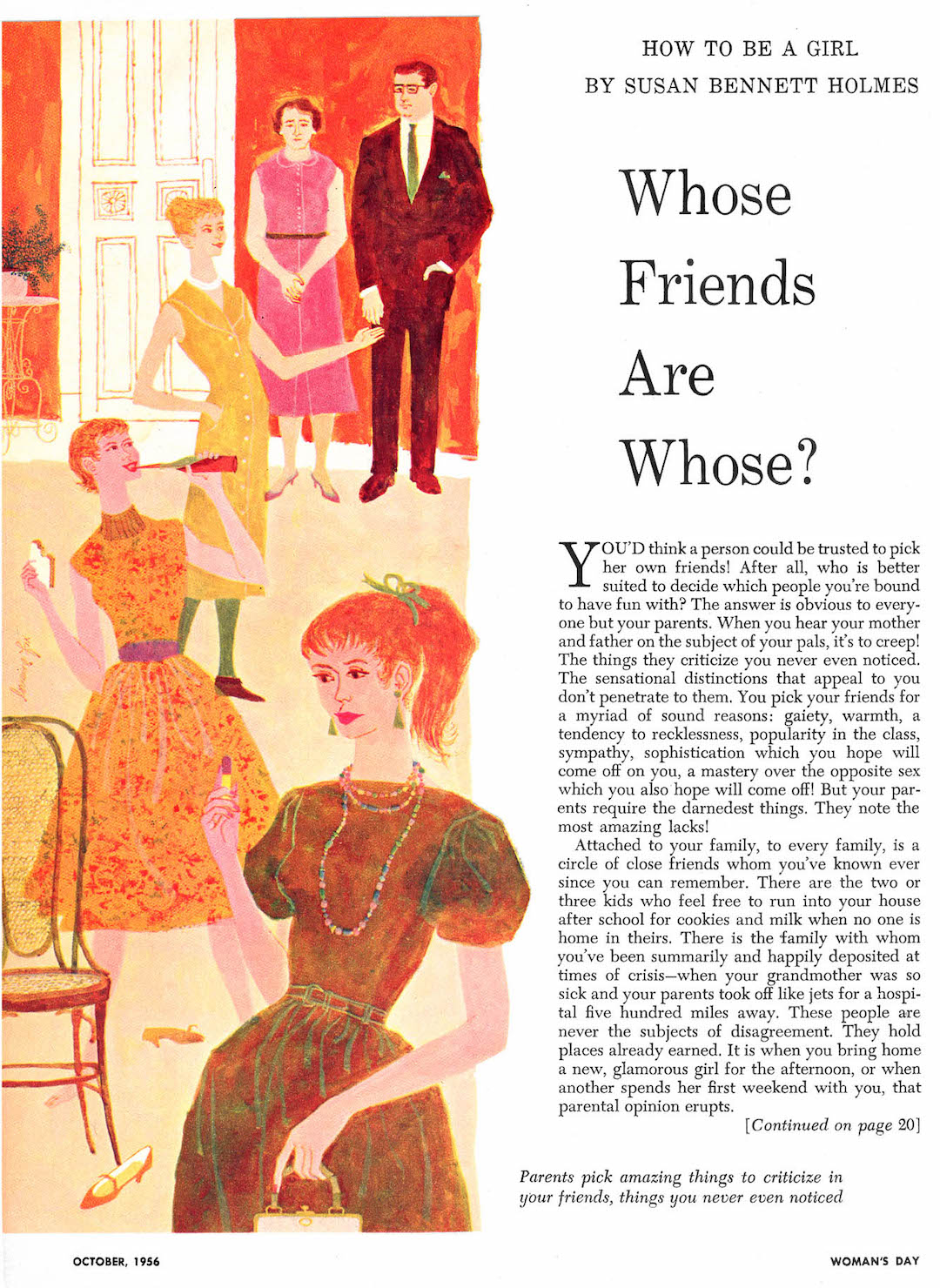
A few weeks ago, I debuted a #TBT series that’ll focus on illustration produced long ago. Next up is Lorraine Fox was an editorial illustrator whose work graced magazines, book covers, and advertisements during the mid 20th century. She was described a standout in a “field overbearingly populated by men.”
Art had an early place in Lorraine’s life, and the endeavor was supported by her parents—especially her mother, who took a job cleaning houses to help pay for schooling. Thanks to her, both Lorraine and her bother Gil were able to have accomplished careers in illustration (Gil was a comic book artist.)
After graduating from Pratt, Lorraine got a job in the advertising field. “I got my first job in an agency,” she told Famous Artist magazine in 1967. “The man I worked for would say, for example, ‘We have a medical thing we want to sell here,’ and he’d give me the headline and I was supposed to come up with a dozen fast sketches, but I was not really an idea lady. Instead, I would get an idea I liked and finish completely and carefully. He finally said that I should get an agent and free-lance.”
Lorraine says she didn’t have any trouble getting an agent. “I suppose you could call the kind of thing I did ‘decorative design.’ It leaned toward the primitive and people liked it.” She painted magazine covers and pictures of food but was “constantly annoyed.” Lorraine explains, “People would look at my work and say, ‘How cute,’ or ‘How feminine.’ I’d kind of smile and say, ‘Thank you.’ ” She’d ask herself, “Why can’t I be more of an artist?”
It’s about this time that she joined the Charles E. Cooper studio—the place for commercial art at the time. (Her husband, Bernie D’Andrea was also a member.) Despite being a male-dominated setting, Lorraine broke through the “boys club,” and continually honed her style.
Murray Tinkelman, the Director of the MFA program in Illustration at the University of Hartford, was Lorraine’s friend and fellow Cooper studio mate perhaps best describes her work: “Lorraine lived in… that world of decorative illustration. It wasn’t quite cartooning, it wasn’t quite narrative illustration, it was a kind of symbolic illustration that depended on folk art as a root source.”
To see more of Lorraine’s work, check out Leif Peng’s amazing Flickr account. It’s where I sourced all of these images.







